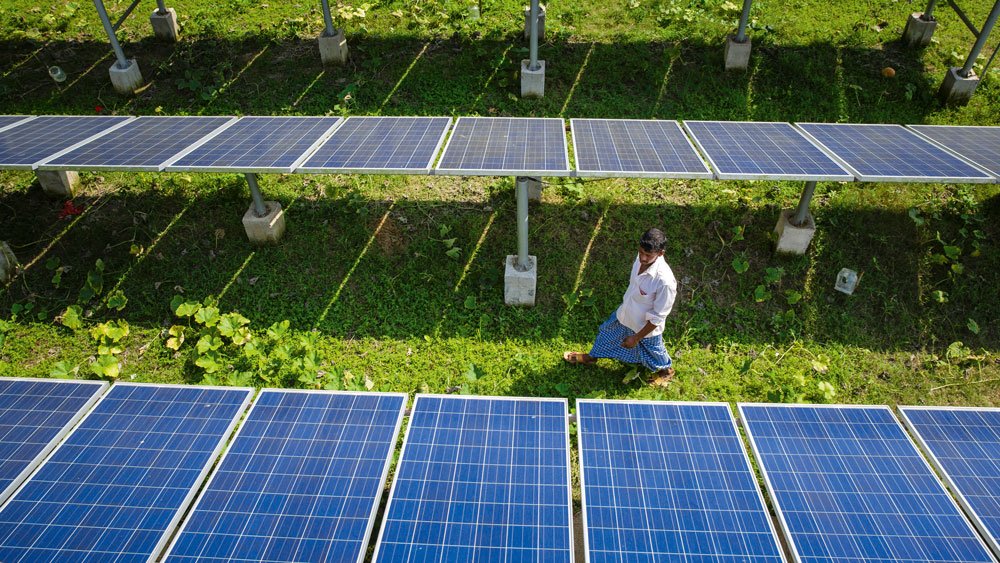Finding the CO₂ Balance
The concept of CO2 offsetting: emissions that are harmful to the climate are offset by certificates from climate protection projects. What exactly is behind this? And when does the scheme make sense?
There is much to be done to stop global warming. As part of the European Green Deal, the EU countries have agreed to reduce their greenhouse gas emissions by at least 55 percent by 2030 compared to 1990 levels. This is a first important step towards becoming the first climate-neutral continent by 2050. More than twelve legislative amendments flank this plan. Beyond the legal obligations, however, every company, every organisation and every private individual would do well to take action on their own initiative to protect the climate - and thus for a planet on which future generations can continue to live well.
One measure is voluntary climate compensation: greenhouse gases that are emitted in one place - above all the CO2 that is caused most by humans - are saved to the same extent in another place. This is done through the targeted financing of development and climate protection projects, for example the expansion of solar power, biogas plants and hydropower. The emissions originally produced are “offset” in this way. Where emissions and savings take place in detail is not decisive, since greenhouse gases do not remain at their place of origin anyway, but are distributed throughout the atmosphere. In this respect, climate change also differs from more localised environmental problems such as water or air pollution.
In practice, climate compensation works with the help of CO2 certificates from climate protection projects. One certificate usually corresponds to one tonne of CO2. Private individuals or companies who have purchased certificates use them to compensate for the amount of CO2 they emit. Anyone who owns enough certificates to compensate for the emissions they cause themselves can call themselves “climate neutral”. The calculation is made with the help of CO2 calculators, such as those provided by the Federal Environment Agency or by various providers of climate compensation on their websites. These include, for example, the climate protection organisations Atmosfair and Myclimate Germany.
As sensible as the principle of offsetting may be, shouldn‘t we rather strive to reduce our CO2 emissions and, at best, avoid them completely? “Ambitious avoidance and reduction of greenhouse gases are essential for achieving the 1.5 degree target,” confirms Peter Renner, Chairman of the Board of the Alliance for Development and Climate Foundation. The 1.5 degree target was set in 2015 by the Paris Climate Agreement. In this agreement, the global community agreed to limit the man-made global temperature increase to a maximum of 1.5 degrees. The Federal Environment Agency also advises on its website: “Give priority to avoiding greenhouse gas emissions over offsetting them.”
“Ambitious avoidance and
reduction of greenhouse
gases are essential for
achieving the 1.5 degree
target.”
Peter Renner, Chairman of the Board, Stiftung Allianz für Entwicklung und Klima
However, for many activities, such as heating or vacuum cleaning, such avoidance is not yet possible. For many products and services, there are simply no climate-friendly alternatives - especially not ones that are affordable for everyone. In these cases, the compensation approach is likely to be a sensible alternative. “Offsetting greenhouse gas emissions that are not or not yet avoidable via high-quality projects in countries of the global South is another step towards effectively advancing sustainable development and climate protection and stabilising the climate,” Peter Renner continues. In August 2022, the City of Düsseldorf also joined the Alliance for Development and Climate, which he represents and which is committed to promoting sustainable development and climate protection.
Private individuals and companies who want to offset their own CO2 emissions are advised to carefully research the specific quality criteria of the respective providers. The Gold Standard, for example, is a special label of quality. Such projects contribute to climate protection, but also to at least one of the 17 United Nations Sustainable Development Goals (SDGs), which aim to make a dignified life possible worldwide and to preserve the natural basis of life in the long term •
Climate protection in action: trained technicians in Tanzania install solar panels on the roofs of houses and huts.
Compensate - the right way
25 of the world’s largest companies often fail to deliver what they promise when it comes to climate protection. The non-profit NewClimate Institute, in cooperation with the non-profit organisation Carbon Market Watch, presented a corresponding study in February 2022: according to the study, companies are only achieving an average of 40 percent in reducing emissions of climate-damaging greenhouse gases - and not 100 percent, as terms like “net zero” and „climate neutral“ suggest. According to the study, 24 out of 25 companies are likely to rely on offset credits of varying quality.
Whether the criteria applicable to climate protection projects are met in individual cases is indeed sometimes difficult to discern, as many different standards exist. The Federal Environment Agency has compiled the most important standards in its guidebook “Voluntary CO2 Offsetting”. The publication also provides an overview of the most common project types and technical terms.
Words Karolina Landowski
Pictures iStock, Stiftung Allianz für Entwicklung und Klima, Die Hoffotografen GmbH, Myclimate




